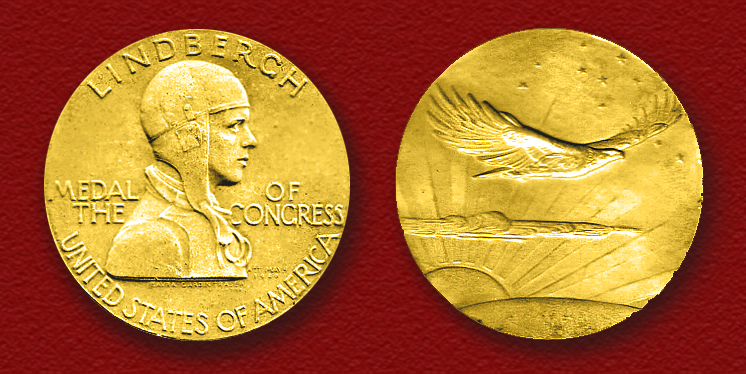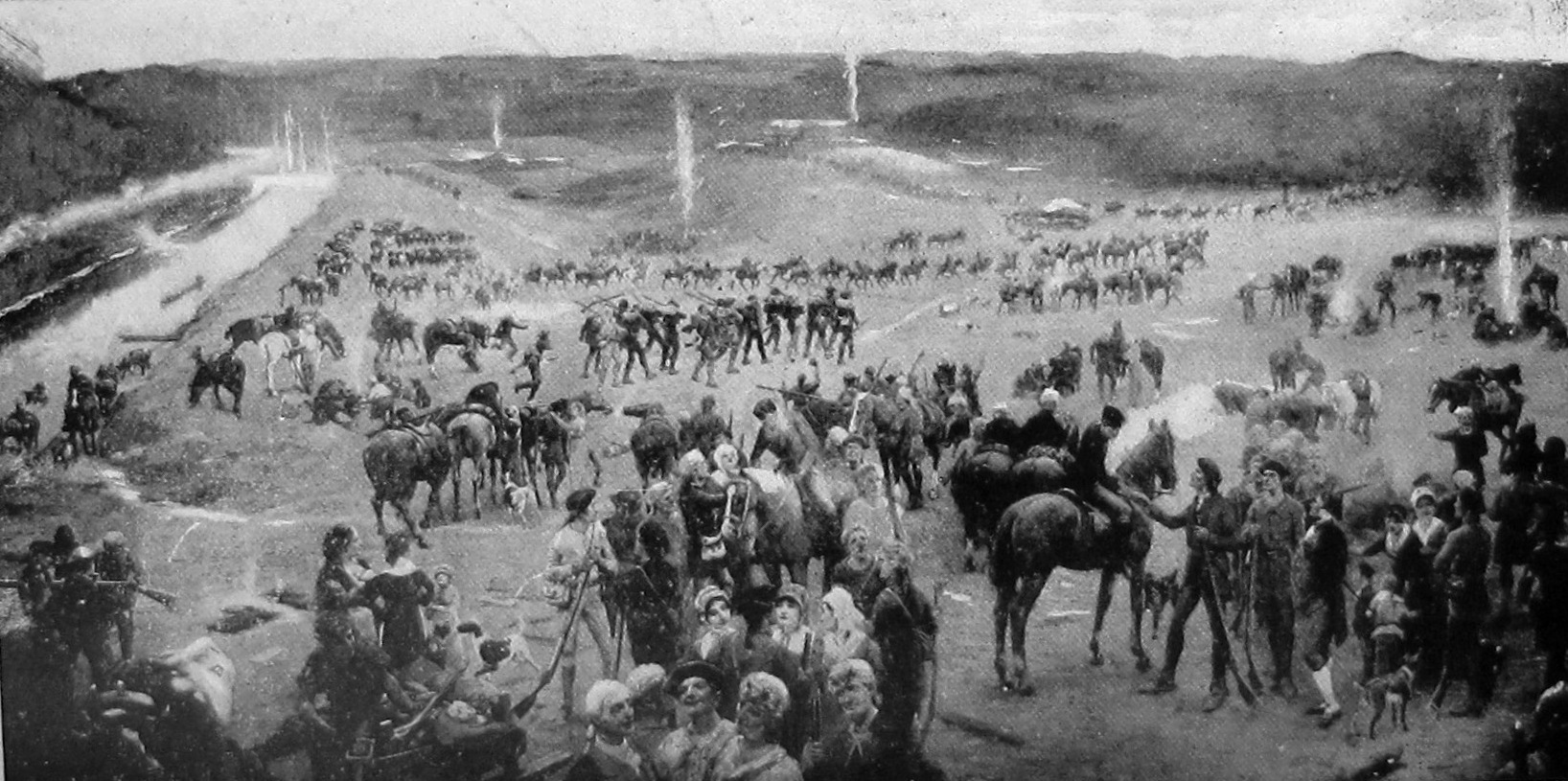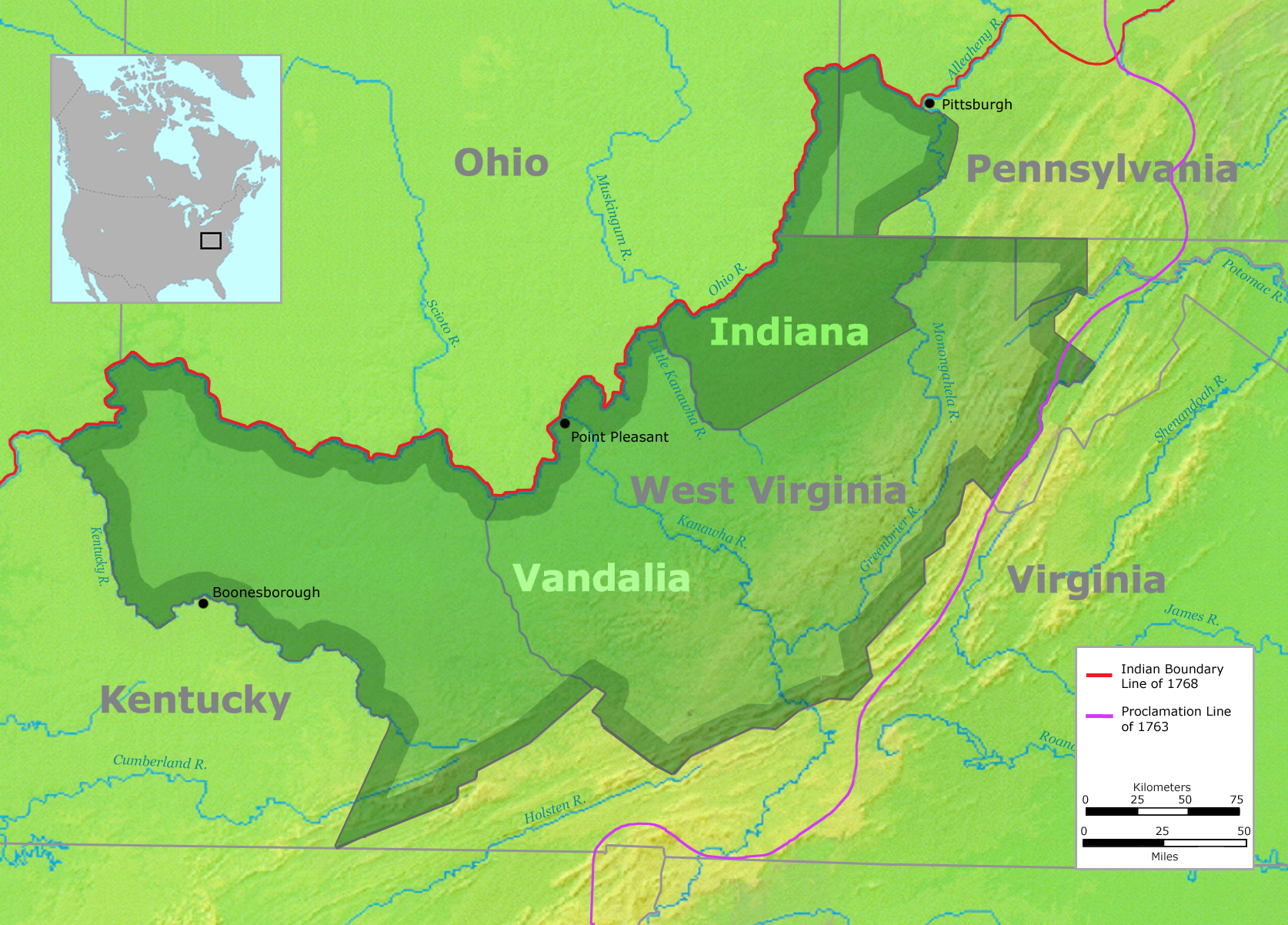|
Isaac Shelby
Isaac Shelby (December 11, 1750 – July 18, 1826) was the first and fifth Governor of Kentucky and served in the state legislatures of Virginia and North Carolina. He was also a soldier in Lord Dunmore's War, the American Revolutionary War, and the War of 1812. While governor, he led the Kentucky militia in the Battle of the Thames, an action that was rewarded with a Congressional Gold Medal. Counties in nine states, and several cities and military bases, have been named in his honor. His fondness for John Dickinson's " The Liberty Song" is believed to be the reason Kentucky adopted the state motto "United we stand, divided we fall". Issac Shelby's military service began when he served as second-in-command to his father at the Battle of Point Pleasant, the only major battle of Lord Dunmore's War. He gained the reputation of an expert woodsman and surveyor and spent the early part of the Revolutionary War gathering supplies for the Continental Army. Later in the wa ... [...More Info...] [...Related Items...] OR: [Wikipedia] [Google] [Baidu] |
James Garrard
James Garrard (January 14, 1749 – January 19, 1822) was an American farmer, Baptist minister and politician who served as the second governor of Kentucky from 1796 to 1804. Because of term limits imposed by the state constitution adopted in 1799, he was the last Kentucky governor elected to two consecutive terms until the restriction was eased by a 1992 amendment, allowing Paul E. Patton's re-election in 1999. After serving in the Revolutionary War, Garrard moved west to the part of Virginia that is now Bourbon County, Kentucky. He held several local political offices and represented the area in the Virginia House of Delegates. He was chosen as a delegate to five of the ten statehood conventions that secured Kentucky's separation from Virginia and helped write the state's first constitution. Garrard was among the delegates who unsuccessfully tried to exclude guarantees of the continuance of slavery from the document. In 1795, he sought to succeed Isaac Shelby as governor. I ... [...More Info...] [...Related Items...] OR: [Wikipedia] [Google] [Baidu] |
Fincastle County, Virginia
Fincastle County, Virginia, was created by act of the Virginia General Assembly April 8, 1772 from Botetourt County.Pendleton, William C. (1920)''History of Tazewell County and Southwest Virginia: 1748-1920'' pp. 255-57. W. C. Hill Printing Company. As colonial government considered Virginia's western extent to be the Mississippi River, that became Fincastle's western limit. Its eastern boundary was essentially the New River (Wood's River at the time, including what is today the Kanawha River), thus dividing Botetourt County from north to south. The new county encompassed all of present day Kentucky, plus southwestern West Virginia and a slice of Virginia's western "tail". Although no county seat was designated by the act creating the county, the colonial governor ordered it to be placed at the "Lead Mines" of present day Wythe County; the community of Austinville later developed there. The governor of Virginia Colony, John Murray, Earl of Dunmore and Viscount of Fincastle, ... [...More Info...] [...Related Items...] OR: [Wikipedia] [Google] [Baidu] |
Congressional Gold Medal
The Congressional Gold Medal is an award bestowed by the United States Congress. It is Congress's highest expression of national appreciation for distinguished achievements and contributions by individuals or institutions. The congressional practice of issuing gold medals to occasionally honor recipients from the military began during the American Revolution. Later the practice extended to individuals in all walks of life and in the late 20th century also to groups. The Congressional Gold Medal and the Presidential Medal of Freedom are the highest civilian awards in the United States. The congressional medal seeks to honor those, individually or as a group, "who have performed an achievement that has an impact on American history and culture that is likely to be recognized as a major achievement in the recipient's field long after the achievement." However, "There are no permanent statutory provisions specifically relating to the creation of Congressional Gold Medals. When a Congr ... [...More Info...] [...Related Items...] OR: [Wikipedia] [Google] [Baidu] |
Battle Of The Thames
The Battle of the Thames , also known as the Battle of Moraviantown, was an American victory in the War of 1812 against Tecumseh's Confederacy and their United Kingdom of Great Britain and Ireland, British allies. It took place on October 5, 1813, in Upper Canada, near Chatham-Kent, Chatham. The British lost control of Southwestern Ontario as a result of the battle; Tecumseh was killed, and his confederacy largely fell apart. British troops under Major General Henry Procter (British Army officer), Henry Procter had occupied Detroit until the United States Navy gained control of Lake Erie, cutting them off from their supplies. Procter was forced to retreat north up the Thames River (Ontario), Thames River to Moraviantown, followed by the tribal confederacy under Shawnee leader Tecumseh who were his allies. American infantry and cavalry under Major General William Henry Harrison drove off the British and then defeated the Indigenous peoples, who were demoralized by the death of Tecu ... [...More Info...] [...Related Items...] OR: [Wikipedia] [Google] [Baidu] |
War Of 1812
The War of 1812 (18 June 1812 – 17 February 1815) was fought by the United States of America and its indigenous allies against the United Kingdom and its allies in British North America, with limited participation by Spain in Florida. It began when the United States declared war on 18 June 1812 and, although peace terms were agreed upon in the December 1814 Treaty of Ghent, did not officially end until the peace treaty was ratified by Congress on 17 February 1815. Tensions originated in long-standing differences over territorial expansion in North America and British support for Native American tribes who opposed US colonial settlement in the Northwest Territory. These escalated in 1807 after the Royal Navy began enforcing tighter restrictions on American trade with France and press-ganged men they claimed as British subjects, even those with American citizenship certificates. Opinion in the US was split on how to respond, and although majorities in both the House an ... [...More Info...] [...Related Items...] OR: [Wikipedia] [Google] [Baidu] |
Battle Of Cowpens
The Battle of Cowpens was an engagement during the American Revolutionary War fought on January 17, 1781 near the town of Cowpens, South Carolina, between U.S. forces under Brigadier General Daniel Morgan and Kingdom of Great Britain, British forces under Lieutenant Colonel Banastre Tarleton, as part of the campaign in the The Carolinas, Carolinas (North Carolina, North and South Carolina, South). The battle was a turning point in the American reconquest of South Carolina from the British. Morgan's forces conducted a Pincer movement, double envelopment of Tarleton's forces, the only double envelopment of the war. Tarleton's force of 1000 British Army, British troops were set against 2000 troops under Morgan. Morgan's forces suffered casualties of only 25 killed and 124 wounded. Tarleton's force was almost completely eliminated with almost 30% casualties and 55% of his force captured or missing, with Tarleton himself and only about 200 British troops escaping. A small force of the ... [...More Info...] [...Related Items...] OR: [Wikipedia] [Google] [Baidu] |
Siege Of Ninety-Six
The siege of Ninety Six was a siege in western South Carolina late in the American Revolutionary War. From May 22 to June 18, 1781, Continental Army Major General Nathanael Greene led 1,000 troops in a siege against the 550 Loyalists in the fortified village of Ninety Six, South Carolina. The 28-day siege centered on an earthen fortification known as Star Fort. Despite having more troops, Greene was unsuccessful in taking the town, and was forced to lift the siege when Lord Rawdon approached from Charleston with British troops. The area is now protected as Ninety Six National Historic Site and was designated a National Historic Landmark. Many of the surviving Loyalists were later relocated by the Crown and granted land in Nova Scotia, where they named their township Rawdon to commemorate their rescuer. Background The British Army's "southern strategy" for winning the American Revolutionary War, which had been successful in taking Charleston and winning submission of much ... [...More Info...] [...Related Items...] OR: [Wikipedia] [Google] [Baidu] |
Battle Of Kings Mountain
The Battle of Kings Mountain was a military engagement between Patriot and Loyalist militias in South Carolina during the Southern Campaign of the American Revolutionary War, resulting in a decisive victory for the Patriots. The battle took place on October 7, 1780, south of the present-day town of Kings Mountain, North Carolina. In what is now rural Cherokee County, South Carolina, the Patriot militia defeated the Loyalist militia commanded by British Major Patrick Ferguson of the 71st Foot. The battle has been described as "the war's largest all-American fight". Ferguson had arrived in North Carolina in early September 1780 to recruit troops for the Loyalist militia and protect the flank of Lord Cornwallis's main force. Ferguson challenged Patriot militias to lay down their arms or suffer the consequences. In response, the Patriot militias led by Benjamin Cleveland, James Johnston, William Campbell, John Sevier, Joseph McDowell and Isaac Shelby rallied to attack Fergu ... [...More Info...] [...Related Items...] OR: [Wikipedia] [Google] [Baidu] |
Battle Of Musgrove Mill
The Battle of Musgrove Mill, August 19, 1780, occurred near a ford of the Enoree River, near the present-day border between Spartanburg, Laurens and Union Counties in South Carolina. During the course of the battle, 200 Patriot militiamen defeated a combined force of approximately 300 Loyalist militiamen and 200 provincial regulars. Background By the summer of 1780, the war that raged in the backcountry of South Carolina had effectively become America’s first civil war. Few men engaged on either side had ever seen Great Britain, and backcountry fighting tended to be especially brutal and retaliatory. Battle On the evening of August 18, two hundred mounted Patriot partisans under joint command of Colonels Isaac Shelby, James Williams, and Elijah Clarke prepared to raid a Loyalist camp at Musgrove’s Mill, which controlled the local grain supply and guarded a ford of the Enoree River. The Patriots anticipated surprising a garrison of about an equal number of Loyalists, bu ... [...More Info...] [...Related Items...] OR: [Wikipedia] [Google] [Baidu] |
American Revolutionary War
The American Revolutionary War (April 19, 1775 – September 3, 1783), also known as the Revolutionary War or American War of Independence, was a major war of the American Revolution. Widely considered as the war that secured the independence of the United States, fighting began on April 19, 1775, followed by the Lee Resolution on July 2, 1776, and the Declaration of Independence on July 4, 1776. The American Patriots were supported by the Kingdom of France and, to a lesser extent, the Dutch Republic and the Spanish Empire, in a conflict taking place in North America, the Caribbean, and the Atlantic Ocean. Established by royal charter in the 17th and 18th centuries, the American colonies were largely autonomous in domestic affairs and commercially prosperous, trading with Britain and its Caribbean colonies, as well as other European powers via their Caribbean entrepôts. After British victory over the French in the Seven Years' War in 1763, tensions between the motherla ... [...More Info...] [...Related Items...] OR: [Wikipedia] [Google] [Baidu] |
Battle Of Point Pleasant
The Battle of Point Pleasant, also known as the Battle of Kanawha, was the only major action of Dunmore's War. It was fought on October 10, 1774, between the Virginia militia and Shawnee and Mingo warriors. Along the Ohio River near modern-day Point Pleasant, West Virginia, forces under the Shawnee chief Cornstalk attacked Virginia militiamen under Colonel Andrew Lewis, hoping to halt Lewis's advance into the Ohio Valley. After a long and furious battle, Cornstalk retreated. After the battle, the Virginians, along with a second force led by Lord Dunmore, the Royal Governor of Virginia, marched into the Ohio Valley and compelled Cornstalk to agree to a treaty, which ended the war. Preparations Colonel Andrew Lewis, in command of about 1,000 men, was part of a planned two-pronged Virginian invasion of the Ohio Valley. As Lewis's force made its way down the Kanawha River, guided by pioneering hunter/trapper Matthew Arbuckle Sr., Lewis anticipated linking up with another force ... [...More Info...] [...Related Items...] OR: [Wikipedia] [Google] [Baidu] |
Lord Dunmore's War
Lord Dunmore's War—or Dunmore's War—was a 1774 conflict between the Colony of Virginia and the Shawnee and Mingo American Indian nations. The Governor of Virginia during the conflict was John Murray, 4th Earl of Dunmore—Lord Dunmore. He asked the Virginia House of Burgesses to declare a state of war with the Indian nations and call out the militia. The conflict resulted from escalating violence between white settlers, who, in accordance with previous treaties, were exploring and moving into land south of the Ohio River (modern West Virginia, southwestern Pennsylvania, and Kentucky), and Native Americans, who had rights to hunt there. As a result of incursions and successive attacks by settlers upon Indian lands, provoking Indian war bands to retaliate, war was declared "to pacify the hostile Indian war bands". The war ended soon after Virginia's victory in the Battle of Point Pleasant on October 10, 1774. As a result of this victory, the Colony of Virginia took away t ... [...More Info...] [...Related Items...] OR: [Wikipedia] [Google] [Baidu] |

.jpg)







